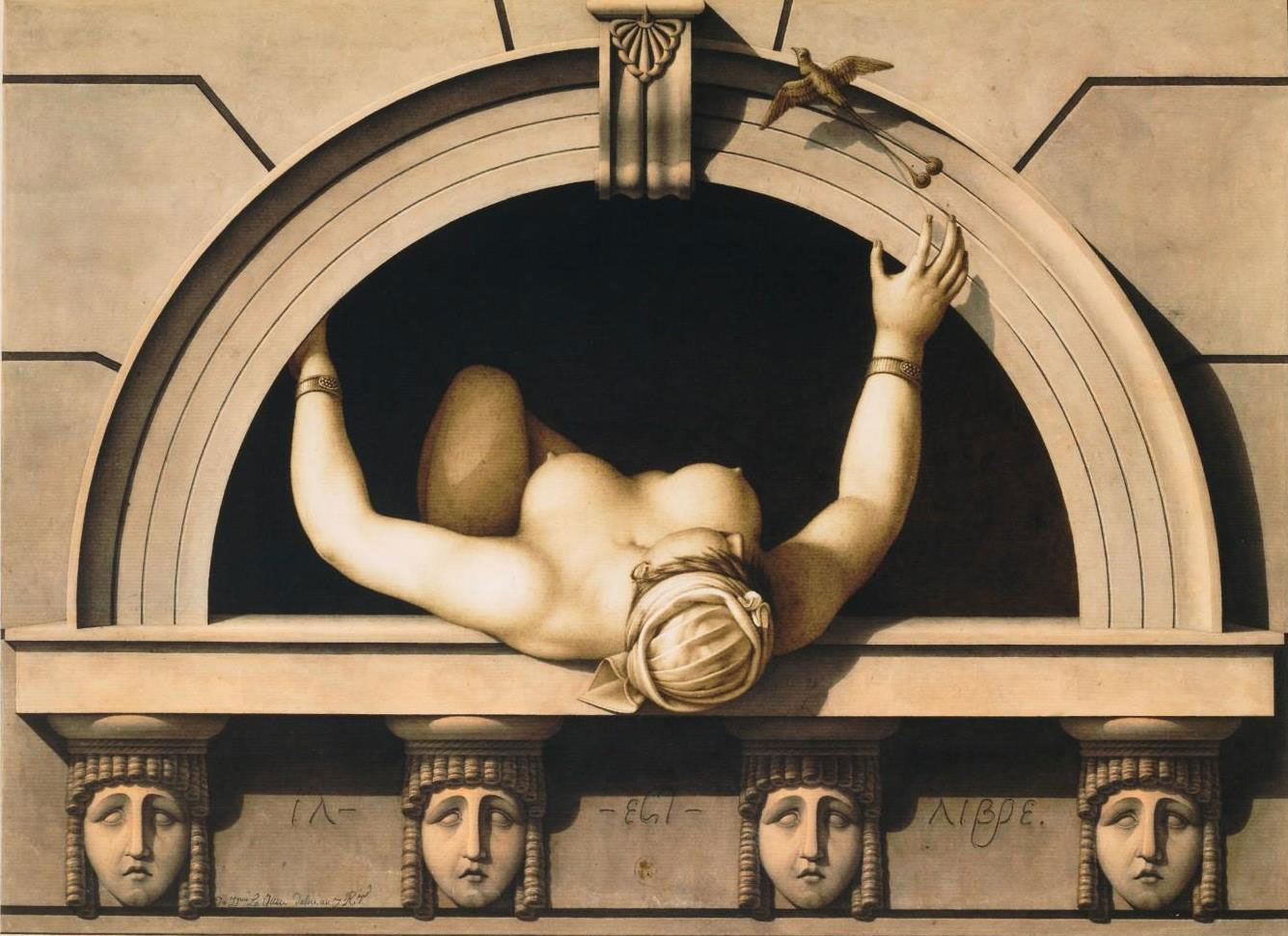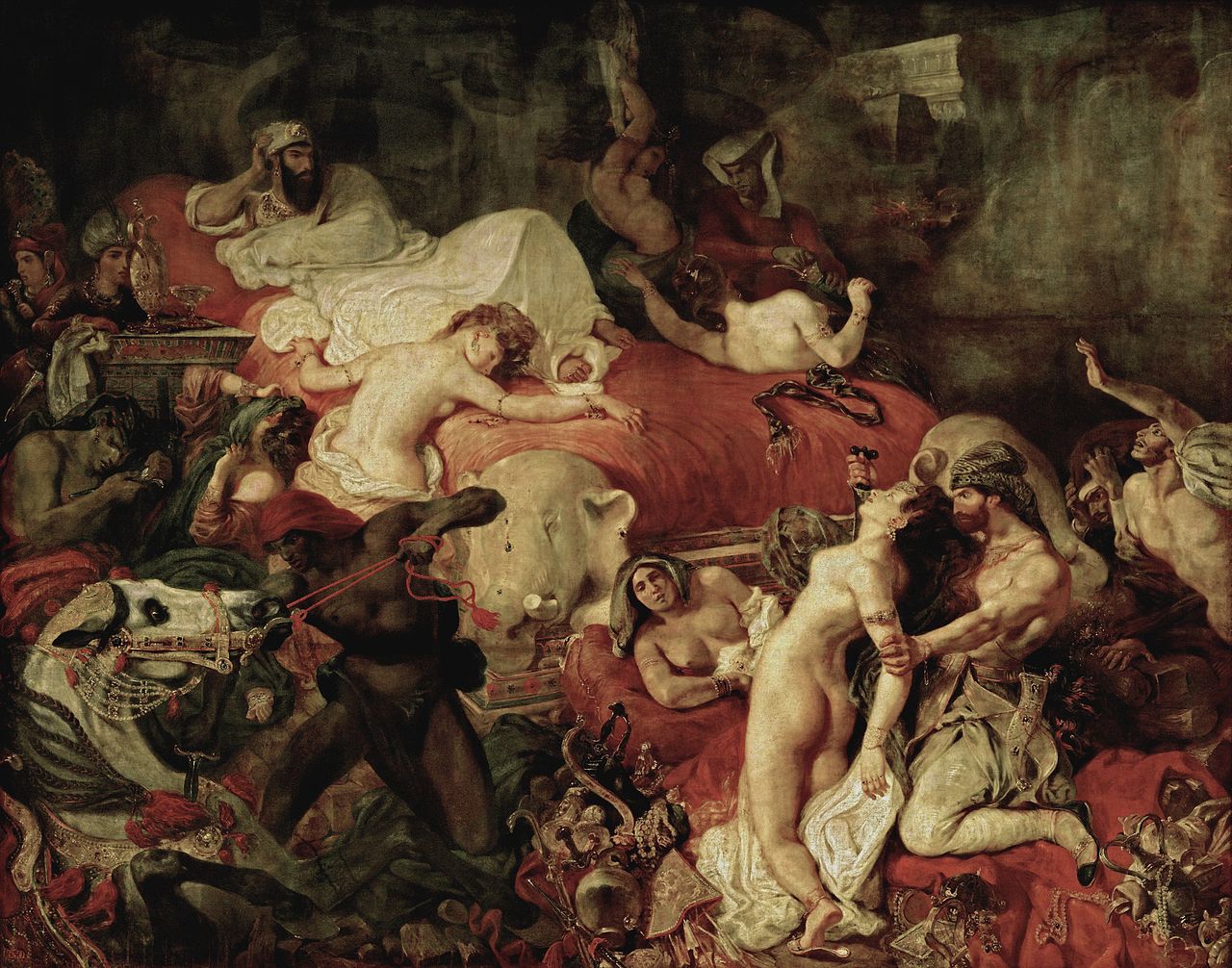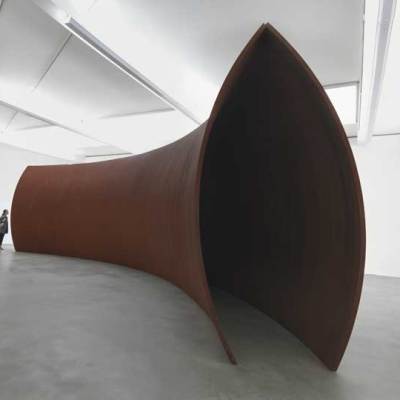The Musée d’Orsay’s exhibition ‘Sade: Attack the sun’ is chiefly curated by Annie Le Brun, a sometime Surrealist, poet, and academic specialist in the Marquis de Sade (1740–1814) – libertine, criminal, aristocrat, revolutionary, and prolific author (the current Pléiade edition of his works runs to more than 4,000 pages). As per its introductory text, the exhibition sets out to measure the aftershock of the explosive sensual rebellion of works like 120 Days of Sodom (1785) and Philosophy in the Boudoir (1795) in the art of the 19th century and beyond – a discovery, as Le Brun sees it, of ‘the wildly differing directions desire had taken’ and of ‘desire itself’ as ‘the great inventor of form’.
The hang jumbles works ahistorically, punctuating the visual flow with key quotations from Sade’s books and letters. Its argument unfolds across eight chapter-like sections, each limning an aspect of the Sadeian discovery of desire: ‘Between Pleasure and Pain’, for example, gathered female figures from Khnopff to Man Ray in which cruelty and tenderness are melded together; ‘Human, All Too Human, Inhuman’ gathered erotically charged depictions of violence: Cézanne’s enigmatic Abduction (1867), Vallotton’s creepy Orpheus dismembered by Maenads (1914), and Picasso’s Rape of the Sabines (1962).
The cumulative effect is powerful, and makes for compelling individual insights. A small Degas sketch of a couple in an interior (1803–05), showing the man upright, the female seated away from him on a couch, seems, when paired with a quotation from Sade’s Justine (‘Do not think that a woman’s beauty excites a libertine’s mind: it is actually much rather the type of crime which laws have associated with possessing her’) to reveal a lurking sexual threat, a haunting prelude to Sickert’s Camden Town Murder (1908). The torturous pose and strangely vacant surface of Ingres’s full-length nude (c. 1819) – a study for his Angelica saved by Ruggiero (1819–39) – is persuasively described by a wall text as a ‘symbolic blank page of flesh’, the abstract background and lack of narrative detail only enhancing the sense that for Ingres desire was written in and on the body. In the final section, examining space itself exploded by desire, the stilted vertigo of Lequeu’s 1798 lithograph He Is Free opens an enticing dialogue with the aerial tumult of Max Ernst’s Bride of the Wind (1927).
On the other hand, the framing of these works in such a heady conceptual environment occasionally risks over-determination (I sometimes had the feeling that even the most innocuous object would assume a suggestively dark quality in this rather Grand Guignol setting), as well as distracting from a fairly wild unevenness in artistic quality: hanging Cézanne’s enthralling Temptation of St Anthony (1870) just a few feet away from an icky, kitsch fantasy by Franz von Stuck illuminates little besides the chasm of seriousness between them. Yet the many oddities here – Rodin’s plaster fragments of a St John the Baptist bundled together in a reliquary box; some Ingres drawings after erotic prints; a 1934 collage of a female head by Jindřich Štyrský, which gives John Stezaker a run for his money some 50 years ahead of time – all hold their own in the company of Goya’s Cannibals Preparing their Victims (1800–08) and Delacroix’s Medea (1838)
The problem with this variety, in fact, is that the exhibition ends up on the one hand examining Sade as a concrete inspiration for certain artists (e.g. Masson), and on the other treating him as a kind of synecdoche of a much broader cultural tendency, encompassing artists with no demonstrable direct links to his thought (e.g. Greuze). The question thus arises of exactly what work belongs to this broader Sade-ian canon, and what doesn’t. If it makes sense for Hans Bellmer to be well represented in this display, showing us as he does the body as an erotic vehicle, deformed by desire – why not also, say, Renoir, who, for all his surface prettiness, practises his own erotic distortions? There is plenty of Bellmer in the section ‘Desire as a Principle of Excess’, which draws together the methodical slaughter of a study for Delacroix’s 1827 Death of Sardanapalus to Surrealism’s interest in sexual machinery, alongside Picabia and the inevitable Duchamp. In this milieu, Pierre de Klossowski – whose drawings were paired unforgettably with Bellmer in an exhibition at London’s Whitechapel gallery in 2006, and who even engaged directly with Sade in an essay of 1947 – is conspicuous by his absence.
Thinking about how Klossowski’s homoerotic Immortal Adolescent series of the late ‘80s might look in this setting put into stark relief how far the seemingly transgressive canon assembled here is actually almost entirely composed of female bodies held under a heterosexual male gaze – an impression which the presence of a single, haphazardly assembled wall of male nudes, and the inclusion of a grand total of two works by female artists, does little to shake.
Perhaps Sade’s ‘revolution of sensibility’ left some hierarchies more challenged than others, then. Or perhaps this is mere sniping at an otherwise vastly impressive endeavour. Still, it seems in the spirit of Sade to speak up when certain orthodoxies begin to chafe, to wonder what other objects of desire might supplement the ones gathered here.
‘Sade. Attacking the Sun’ is at the Musée d’Orsay, Paris, from 14 October 2014–25 January 2015.



